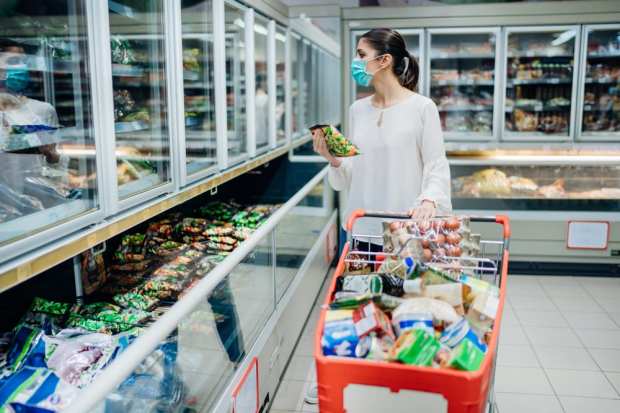US Grocery Sales Drop As Consumers Order Delivery

With high U.S. unemployment and recent PYMNTS research finding that 60 percent of Americans live paycheck to paycheck, paying for even the basic necessities of daily life might soon prove to be a struggle for many.
As The Wall Street Journal reported on Thursday (Aug. 27), recent data point to a pullback in spending at the grocery, both online and in-store. The decline comes after a jump in spending seen in May, June and July.
But data from IRI show that U.S. grocery sales fell in the week ending Aug. 16 as measured against July’s end. The Journal noted that volumes fell by low- to high-single-digit percentages across segments as varied as soup, milk and coffee.
And while sales grew year over year, at least some of the week-over-week pressure stems from some U.S. government stimulus payments coming to an end. Many unemployed Americans used the $600 weekly in additional unemployment benefits for everything from rent to electronics for the kids suddenly thrown into distance learning, but the program behind the extra money ended on July 31.
There’s no clear replacement on the horizon. Congress is still debating an extension, while President Donald Trump authorized up to $400 a week by an executive order (which it’s unclear he actually had the constitutional authority to issue).
For now, the reduced aid has apparently spurred consumers to pull back on buying that most basic component of life: food. With pressure on cash flow, consumers are scrutinizing what they spend and where, according to the Journal.
The WSJ said that many grocers are mulling or embracing discounts to keep sales humming. “People perceive they’re spending more money on food despite eating out less. So, we’ll be thoughtful about the way we plan the rest of the year and react to changes in the trends we see from our shoppers,” Walmart U.S. CEO John Furner said recently on the retail giant’s conference call.
Some items seeing sales pressure are staples with long shelf lives, like coffee and frozen items, which don’t necessarily need to be replenished all that often, the paper said.
But there might be other reasons grocers are feeling a sales pinch. For example, the great digital shift has helped consumers pivot toward other ways of getting food. PYMNTS’ data found that more than 14 percent of consumers were ordering groceries online as of May, up from a little more than 6 percent in March. And 24.4 percent of consumers surveyed said that they were using digital channels to order from restaurants, up significantly from the 4.7 percent seen in March.
Yes, restaurants – especially QSRs – have seen double-digit sales declines overall, but digital efforts like delivery and curbside pickup have ramped up. Such takeout services might blunt at least some spending at the grocery store as a “substitution effect.”
For instance, Domino’s recently reported that same-store sales shot up 16 percent in its second quarter. Chipotle has likewise seen digital revenues soar by over 200 percent and delivery grow more than 125 percent.
In other words, comfort food might rule the day amid the great digital shift. And that might give grocers some food for thought on where things are headed.